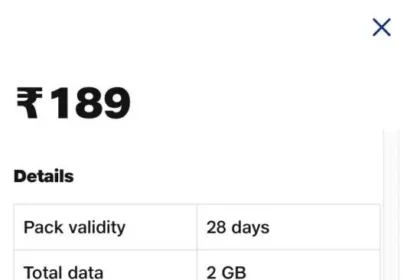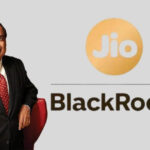Introduction
The world is seeing a second phase in the internet revolution—in space. As billions of individuals remain without stable internet connectivity, particularly in rural and underserved areas, satellite-based broadband has emerged as a convincing solution. In contrast to conventional fiber or cellular technology, which is costly and time-consuming to roll out in challenging geographies, satellite internet offers high-speed connectivity from low Earth orbit (LEO), effortlessly bridging geographical distances.
The satellite internet war has heated up in the last few years, spearheaded by international tech majors and telecom heavyweights. Elon Musk’s Starlink (by SpaceX) has already inserted thousands of satellites into orbit and has started services in several countries. Alongside, OneWeb, supported by Bharti Airtel and Eutelsat, is establishing itself in Europe, the UK, and India. At the same time, Reliance Jio, the telecom giant of India, has collaborated with SES, a Luxembourg satellite operator, to launch satellite-based services suiting the Indian scenario.

Amazon’s Project Kuiper—Jeff Bezos’ $10 billion satellite broadband venture—is set to enter the fray, with India among its target strategic markets. Amazon has sought the requisite licenses from Indian regulators, which indicates its interest in entering the fast-developing and competitive satellite internet market.
India is an important market for several reasons. With over 700 million internet users and still tens of millions of people offline, the country offers a tremendous opportunity and an immediate need.
Amazon’s arrival can remake satellite internet in India, not only by introducing a new player but also by importing its global scale and technological know-how and stitching services like AWS and e-commerce into an ecosystem of digital offerings. As the regulation process works out and competition for the Indian sky heats up, the Indian sky will be the next great battleground for internet supremacy worldwide.
Amazon Project Kuiper
Project Kuiper is Amazon’s bold foray into the universe of satellite internet broadband, seeking to network humanity worldwide, or prohibitively expensive. So named after the Kuiper Belt, that part of the solar system beyond Neptune that is populated with icy bodies, the project represents Amazon’s vision to bring connectivity much further than the terrestrial networks’ current reach.
Project Kuiper is a low-Earth orbit (LEO) satellite constellation that provides high-speed, low-latency internet connectivity. In contrast to older satellite systems far from Earth (in geostationary orbit), LEO satellites have an altitude of about 500 to 2,000 kilometers. This proximity reduces latency, essential for internet applications like video calls, remote learning, real-time cloud computing, and online games.
Amazon intends to launch 3,236 satellites in phases as part of this constellation.
- Orbit Type: Low Earth Orbit (LEO)
- Number of Satellites: 3,236 approved
- Speed Targets: 100 Mbps to 1 Gbps
- Latency: Equivalent to fiber (~30-50 milliseconds)
- User Terminals: Small, affordable, and simple to install
- Integration Potential: Seamless with Amazon’s cloud infrastructure (AWS)
But Project Kuiper isn’t merely a matter of hardware in space. The ultimate objective is to close the international digital divide by offering cheap and high-speed internet to remote and underserved communities on the continents. This way, Project Kuiper also sets Amazon up to compete head-to-head with other space-based broadband companies such as Starlink, OneWeb, and Jio-SES, particularly in rapidly developing markets such as India, Latin America, and Africa.
With the satellite internet market intensifying, Project Kuiper is set to be a serious disruptor. It will harness Amazon’s deep pockets, cloud dominance, and worldwide logistics network to offer connectivity at unprecedented scale.
Why India?
- India is among the most strategically valuable markets for satellite internet, and Amazon is certainly aware of it. With its geography, digital divide, and growing demand for connectivity, the nation presents a challenge and a massive opportunity for Project Kuiper.
- India has over seven hundred million internet users as of 2024, but tens of millions are disconnected, especially in rural and remote areas. Legacy broadband infrastructure cannot reach India’s hilly tracts, deserts, islands, and dense forests. It is neither affordable nor feasible to lay fiber-optic cables over such a rugged terrain. This is where LEO satellite internet comes into the picture — transmitting connectivity directly from space to user terminals without ground infrastructure.
- The Indian government has also aggressively pursued its Digital India program to make high-speed internet access available to all citizens. Every e-governance initiative, online education initiative, telemedicine initiative, and digital banking initiative needs stable, high-speed connectivity, and satellite broadband can provide that, mainly where mobile towers and fiber networks fall short.
- From a commercial perspective, India is a high-growth, under-penetrated market. Amazon has already submitted the applications for the required GMPCS (Global Mobile Personal Communication by Satellite) license and spectrum allocation from these avenues—a definitive sign of serious intention.
- Amazon’s Project Kuiper views India as another market, a critical test bed, and a growth center in this high-stakes competition.
Challenges for Kuiper in India
- Amazon’s Project Kuiper, with its worldwide reach, has a few significant hurdles to cross in the Indian satellite broadband market. The biggest hurdle in the near term is regulatory permission. Gaining the GMPCS license is just half the battle—Amazon also has to deal with complicated matters involving spectrum allocation, national security clearances, and adhering to India’s stringent data localization regulations.
- Another significant challenge is the establishment of ground infrastructure. Unlike other markets where Amazon has logistics superiority, India demands localized investment in gateway stations, user terminals, and distribution networks, particularly in rural and hinterland regions. Establishing this from square one will be time-consuming and requires coordination with local partners.
- India’s price-conscious market is also a worry. Customers are accustomed to cheap data prices due to competitors such as Jio’s aggressive price war. Kuiper will have to provide competitively priced internet packages and cheap hardware while coping with high operational expenses in satellite deployment.
- Lastly, Kuiper will confront Jio’s deeply rooted telecom ecosystem of fiber, mobile, and future satellite offerings.
Global Implications
- India’s size, heterogeneity, and regulatory intricacies make it a strategic proving ground for any international technology project — and Project Kuiper is no different. If Amazon can successfully deploy and scale its satellite-based internet service in India, it would be a model for expansion in other developing markets in Asia, Africa, and Latin America. These markets share similar connectivity challenges and represent huge, untapped demand for low-cost, high-speed broadband.
- An Indian success would prove Kuiper’s technology and business model in live, high-density conditions. From dealing with regulatory environments to maximizing low-cost delivery and ground support, what is learned in India can be applied everywhere. That would give Amazon a vital advantage in the global satellite internet competition, particularly over competitors such as Starlink, which has already accumulated a first-mover advantage in most nations.
- Additionally, Kuiper’s achievement in India has the potential to define the future of LEO satellite internet by demonstrating its potential in huge, price-conscious, infrastructure-poor markets.
Conclusion
Project Kuiper (Amazon), the race now involves four titans: Starlink with its experience in global rollouts, OneWeb with Bharti Airtel backing and regulatory approvals, Reliance Jio-SES with unparalleled local heft and telecom infrastructure, and now Kuiper, which brings Amazon’s tech might and deep pockets.
Although Kuiper is yet to be in the initial phase of regulatory clearances, the next few months will prove decisive. All eyes will be on the issue of GMPCS license awards, spectrum allocation, and proposed pilot rollouts. Public trials, tie-ups with Indian telcos, and announcements on local infrastructure will indicate how serious and fast Amazon is about going large in India.
The question is: Can Amazon’s belated but thoughtful entry into this already saturated market be a disruptive force, or will it struggle against early entrants with deeper local ties? Suppose Kuiper can overcome regulatory and cost hurdles. In that case, its entry may heighten the competition for rural connectivity and redefine the future of digital access in India and elsewhere. Whatever it is, a risk or a game-changer, India will be Kuiper’s testing ground.
FAQs
Q1. What is Amazon’s Project Kuiper?
A: Project Kuiper is Amazon’s satellite internet project, which seeks to offer high-speed, low-latency broadband worldwide through low-earth orbit (LEO) satellites—akin to Starlink by SpaceX.
Q2. Why is Project Kuiper focusing on India?
A: India boasts a large population with low internet penetration in rural regions, which makes it an important market for satellite broadband. India is also a rapidly growing digital economy with high data usage for Amazon.
Q3. When does Kuiper plan to launch its services in India?
A: Amazon is targeting a pilot or small-scale launch by the end of 2025, subject to government licensing approvals, such as GMPCS licensing.
Q4. Has Kuiper obtained regulatory approval in India?
A: Not yet. Amazon has submitted a Letter of Intent (LoI) under India’s policy for GMPCS (Global Mobile Personal Communication by Satellite) and is negotiating with DoT and IN-SPACe.
Q5. How many satellites will Project Kuiper employ?
A: Amazon aims to launch 3,236 LEO satellites by 2027. As of mid-2025, 54 working satellites have already been launched.
Q6. How does Kuiper differ from Starlink in India?
A: Although Starlink leads in terms of satellites and early regulatory approval, Kuiper has competitive pricing, a good AWS integration benefit, and intentions to use Amazon’s extensive logistics network to deliver hardware.
Q7. How fast will Kuiper provide internet?
A: Kuiper plans to deliver speeds from 100 Mbps up to 1 Gbps, depending on the user terminal size and type (portable to enterprise-sized units).
Q8. Will Kuiper be affordable for rural consumers?
A: Yes, Amazon is likely to price its fundamental terminals below $400 and provide reasonably priced monthly plans designed for developing markets such as India.







